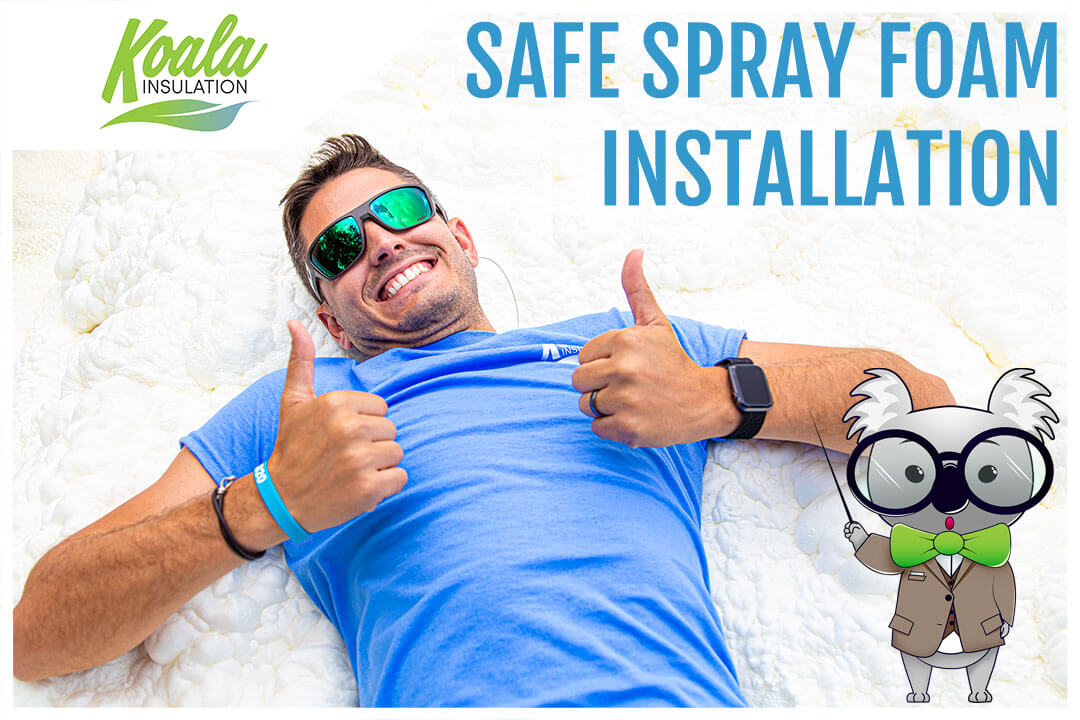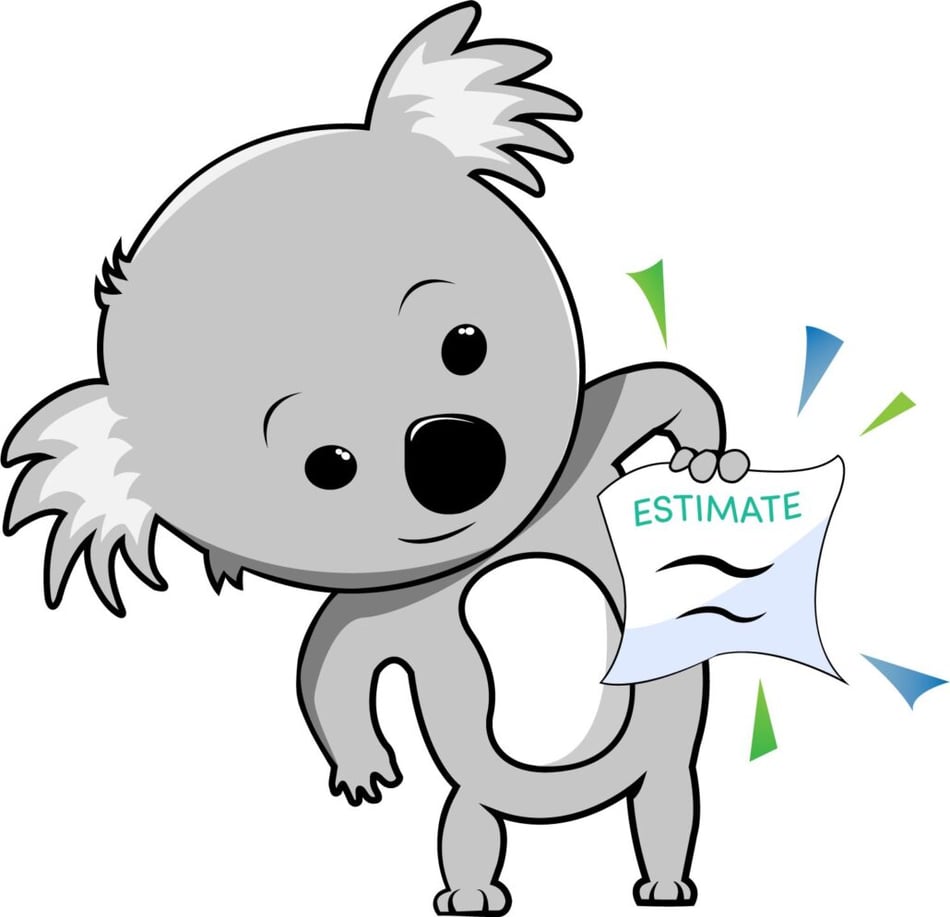Safe Spray Foam Installation

Spray foam is a powerful option for insulating your home or business. It’s famous for its effectiveness, but this high-performance material can be a disaster in the hands of an untrained DIY enthusiast or lazy contractor.
The Koala Insulation process begins with health and safety training for every employee involved in spray foam installation, including assistants. This initial training by the American Chemistry Council is supplemented with in-house instruction for a deeper understanding. Koala personnel are thoroughly trained on the right way to handle the hazardous components that combine to form, when cured, a product as safe as your household Tupperware. During the application and curing process—when materials pose a health risk to exposed individuals—Koala safety guidelines require that occupants vacate the building completely for a period of 24 hours. Occupants can reenter once the product has finished curing and the building has been adequately ventilated and thoroughly cleaned.
Prior to application, the liquid components of spray foam known as A-side and B-side are kept in temperature-controlled storage until use. Safe spray foam depends on a 1:1 ratio of the two components. Koala installers are trained on the science of how equipment temperature and pressure settings work to create this ratio within 2%, but our installers don’t rely on equipment alone to ensure safe spray foam application. They draw from their training in what off-ratio (unsafe) foam looks and behaves like. They perform multiple tests before beginning production spraying and are educated on what equipment settings or application techniques must change to resolve any performance issues discovered during the testing phase.
Safety considerations are always in place before any spraying begins. This includes full-face respiratory gear with supplied clean air, gloves, and head-to-toe chemical-resistant coveralls. Installers shut down the HVAC system and seal off air vents in the installation area to set up ventilation in a way that creates negative pressure. With negative pressure, any leaks will be of clean air coming into the installation area instead of hazardous air moving into other areas of the building.
During spraying, Koala installers take their time to ensure a safe product. Closed-cell spray foam, for example, requires small layers and adequate time between layers so the foam can cool down. Improper installation by a bad contractor can result in scorching from trapped heat in a too-thick layer. Our installers consistently measure temperature and depth of foam to ensure no overheated sections and a finished product that meets the customer’s specifications.
Both types of spray foam insulation can require trimming of some areas to create a flat end result that can have drywall or other material installed against the foam surface. This creates an abundance of small particles and foam dust it’s essential to contain. We continue negative pressure ventilation to keep all particles in the installation area during trimming. Our crews then uphold the Koala commitment to courtesy by leaving every job site cleaner than they found it.
Ventilation continues even after installation is complete. Installers also manage temperature and humidity as needed during the spray foam insulation curing process. This ensures a predictable curing rate and prevents unsafe emissions levels.
When hiring an applicator to install spray foam insulation, check to be sure these safety steps are part of every job they do. If you’ve decided on a contractor who provides recurring health and safety, equipment, and installer training and follows the steps outlined here, you’re ready for a safe and effective spray foam installation! If you’re in need of a contractor like that, contact Koala Insulation today.
Find Your Location


Get a quote


